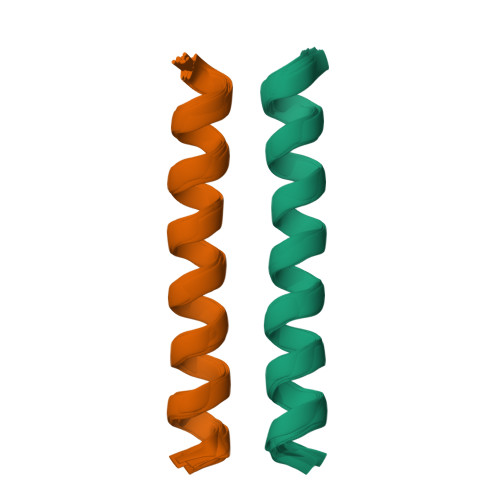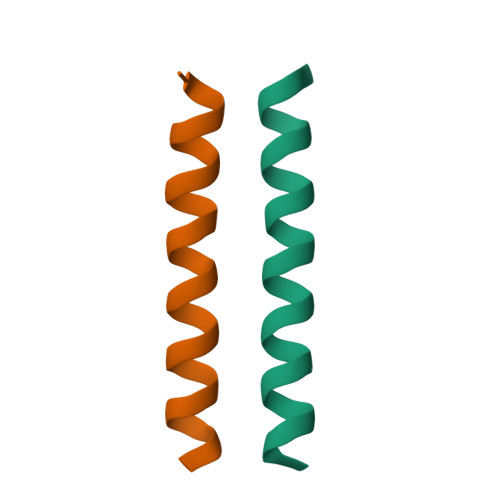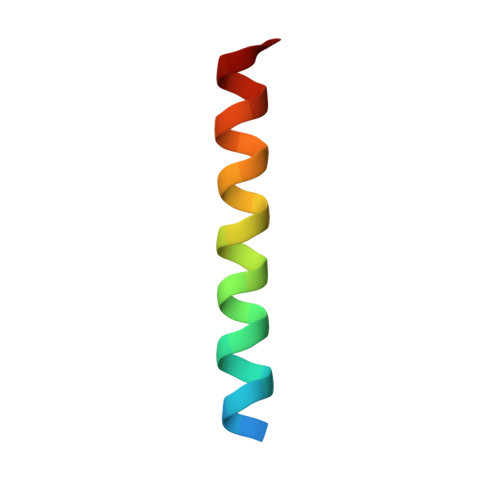Dimeric Transmembrane Structure of the SARS-CoV-2 E Protein.
Zhang, R., Qin, H., Prasad, R., Fu, R., Zhou, H.X., Cross, T.A.(2023) Commun Biol 6: 1109-1109
- PubMed: 37914906
- DOI: https://doi.org/10.1038/s42003-023-05490-x
- Primary Citation of Related Structures:
8U1T - PubMed Abstract:
The SARS-CoV-2 E protein is a transmembrane (TM) protein with its N-terminus exposed on the external surface of the virus. At debate is its oligomeric state, let alone its function. Here, the TM structure of the E protein is characterized by oriented sample and magic angle spinning solid-state NMR in lipid bilayers and refined by molecular dynamics simulations. This protein was previously found to be a pentamer, with a hydrophobic pore that appears to function as an ion channel. We identify only a front-to-front, symmetric helix-helix interface, leading to a dimeric structure that does not support channel activity. The two helices have a tilt angle of only 6°, resulting in an extended interface dominated by Leu and Val sidechains. While residues Val14-Thr35 are almost all buried in the hydrophobic region of the membrane, Asn15 lines a water-filled pocket that potentially serves as a drug-binding site. The E and other viral proteins may adopt different oligomeric states to help perform multiple functions.
Organizational Affiliation:
Department of Chemistry and Biochemistry, Florida State University, Tallahassee, FL, 32306, USA.


















